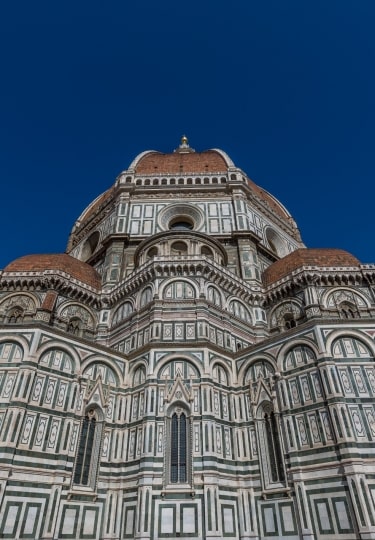The art in Florence is integral to the city’s weave. The Tuscan capital’s glorious historic center is a remarkable Renaissance repository, its medieval piazzas and magnificent palazzos brimming with sculpture, paintings, and priceless pieces.
But it’s not only sculpture with luminous, life-like skin and paintings with a mesmeric depth and order. As one of the most beautiful cities in Italy, Florence’s buildings are often architectural artworks in themselves. Chief among them, and swollen with its own magnificence, is the brick-roofed Duomo.
How the city came to be so rich in art and culture is a tale of medieval power plays. It was the awareness of the Florentine Medici family of the interplay between art and political power that saw them readily finance Renaissance titans such as Michelangelo, Giotto, and Brunelleschi.
Read on for a guide to the most famous art in Florence and where to find it.
Accademia Gallery
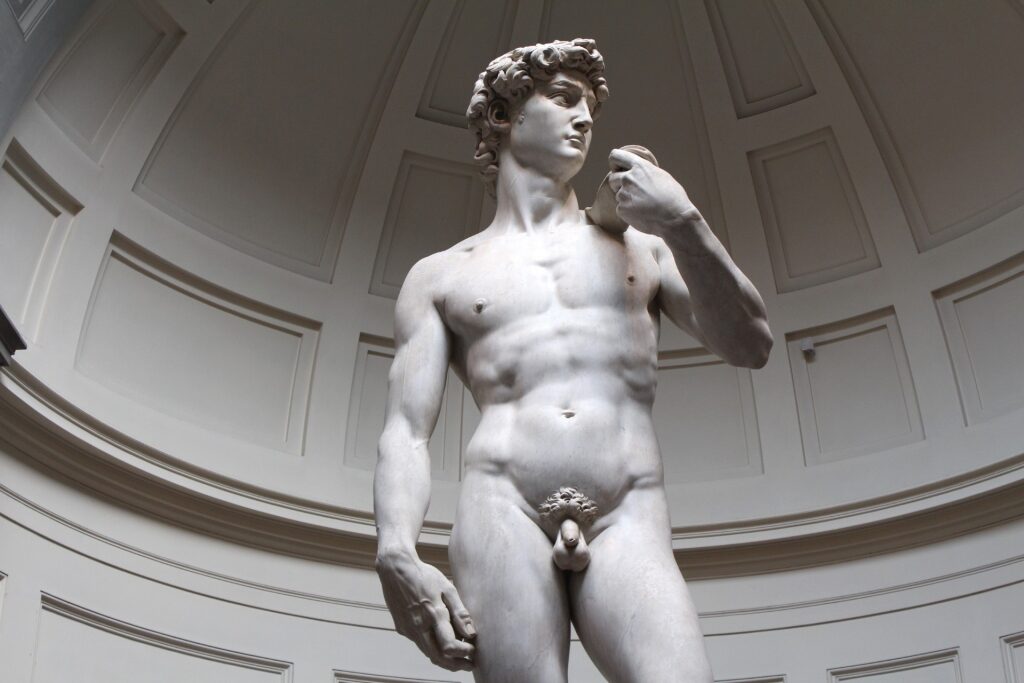
Michelangelo’s David in Accademia Gallery
The Accademia Gallery may be overshadowed by the Uffizi Gallery as a trove of art in Florence, but in almost any other city, this museum would be the headline draw.
Not to suggest that it isn’t well known; it’s just that Florence enjoys such a surfeit of headlining attractions. However, the Accademia has its own giant-slayer, if you will: Michelangelo’s David.
The Accademia Gallery is found a short walk north of the Duomo. Among its numerous highlights are panel paintings by Botticelli, Perugino, and Filippino Lippi and the plaster model for Giambologna’s Abduction of a Sabine Woman, the original of which you’ll see in the loggia at Piazza della Signoria.
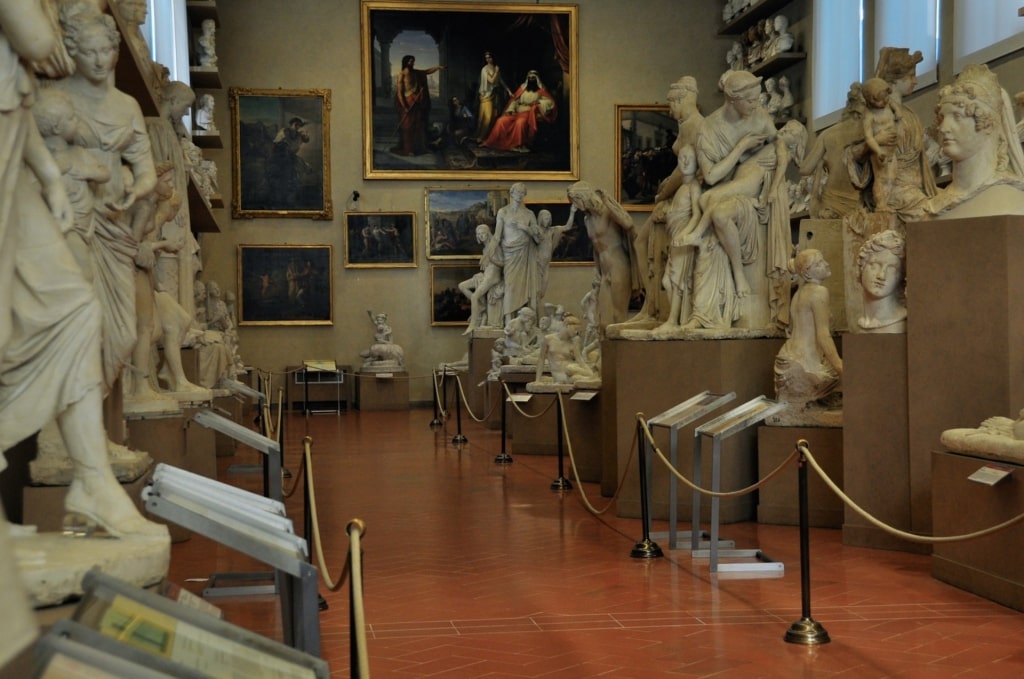
Accademia Gallery Photo by faungg’s photos on Flickr, licensed under CC BY-ND 2.0
Located in the Hall of the Colossus, Giambologna’s twisting three-dimensional scene was a challenge that the Flemish sculptor set for himself. He wanted to see if he could produce a tightly interwoven trio of figures out of a single marble block.
Head downstairs and you’ll find Florentine Gothic paintings with gilt altarpieces by Giotto, while on the top floor, there’s a typically less crowded display of late 14th-century art.
Helping you better grasp the skill involved in creating the altarpieces downstairs, you’ll find a video demonstrating the egg tempera technique that artists employed until the 1400s.
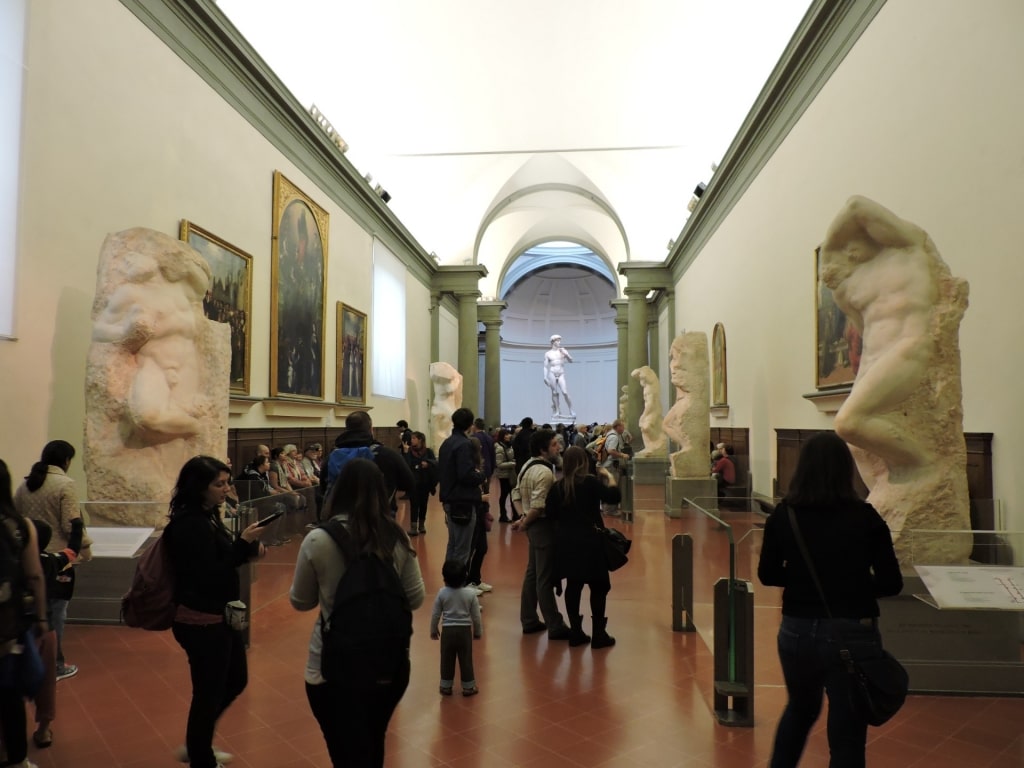
Hall of Prisoners, Accademia Gallery Photo by Dimitris Kamaras on Flickr, licensed under CC BY 2.0
The most popular room is the Hall of Prisoners. Here Michelangelo’s contorted “Slaves” create a kind of sculptural runway leading to the David in its VIP alcove.
To help you around the gallery, and avoid fixation at the feet of David, follow a visitor trail available at the museum. In the summer, late openings offer less crowded opportunities to drink it all in.
Uffizi Gallery
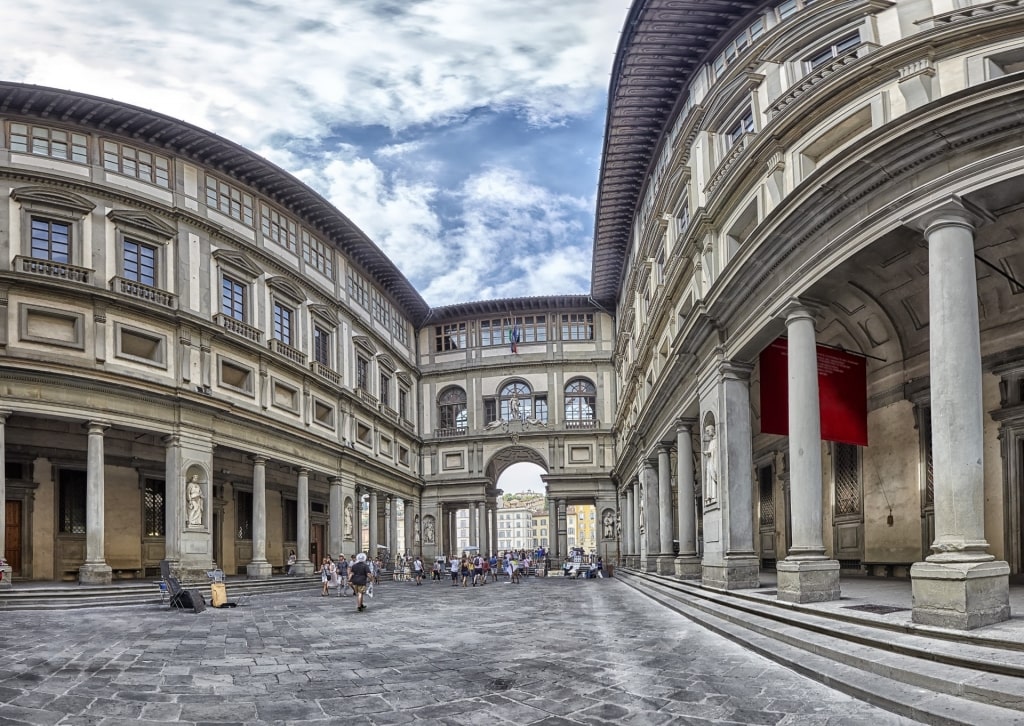
Uffizi Gallery
One of the preeminent art museums in the world, the Uffizi, grandly overlooking the Arno River, contains multitudes. Beneath its richly frescoed ceilings, you’ll discover the largest concentration of Renaissance art in Florence. To top it off, the palazzo it’s housed in is truly worthy of the name.
As with most of the medieval treasures in this beautiful art-filled city, the Medici family had a hand in creating the Uffizi. The building was originally the city’s 16th-century judiciary and administrative offices (Uffizi translates as “offices”).
Giorgio Vasari built it at the behest of Cosimo I de’ Medici, who went on, and his heirs after him, to fill the building with their art collection.
When the Medici era concluded in the 18th century, the Uffizi and its contents were left to the city. The average Florentin could now drink in the Renaissance genius of artists such as Raffaello, Caravaggio, Leonardo da Vinci, Giotto, and Michelangelo.
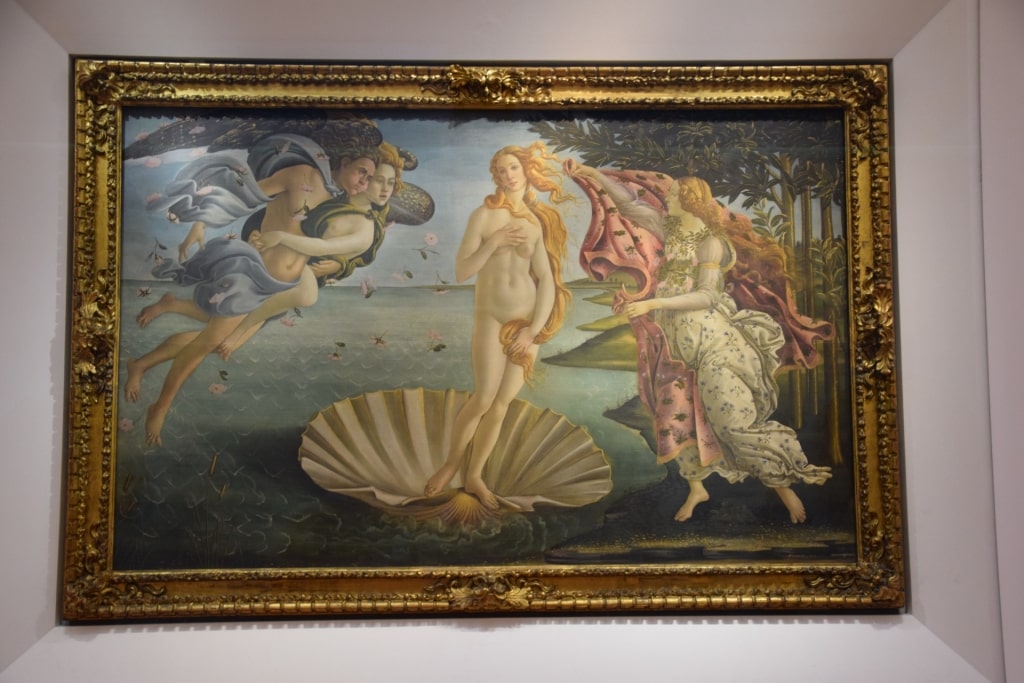
Botticelli’s Birth of Venus in Uffizi Gallery Photo by George M. Groutas, licensed under CC BY 2.0
So there is a lot to see in this maze of masterpieces. Pacing yourself is advised, as is breaking up your Uffizi experience into two dedicated visits.
Your viewing checklist should include Botticelli’s Birth of Venus, Titian’s Venus of Urbino, and Filippo Lippi’s Madonna and Child with Two Angels.
Read: Two Days in Florence
Duomo Santa Maria del Fiore
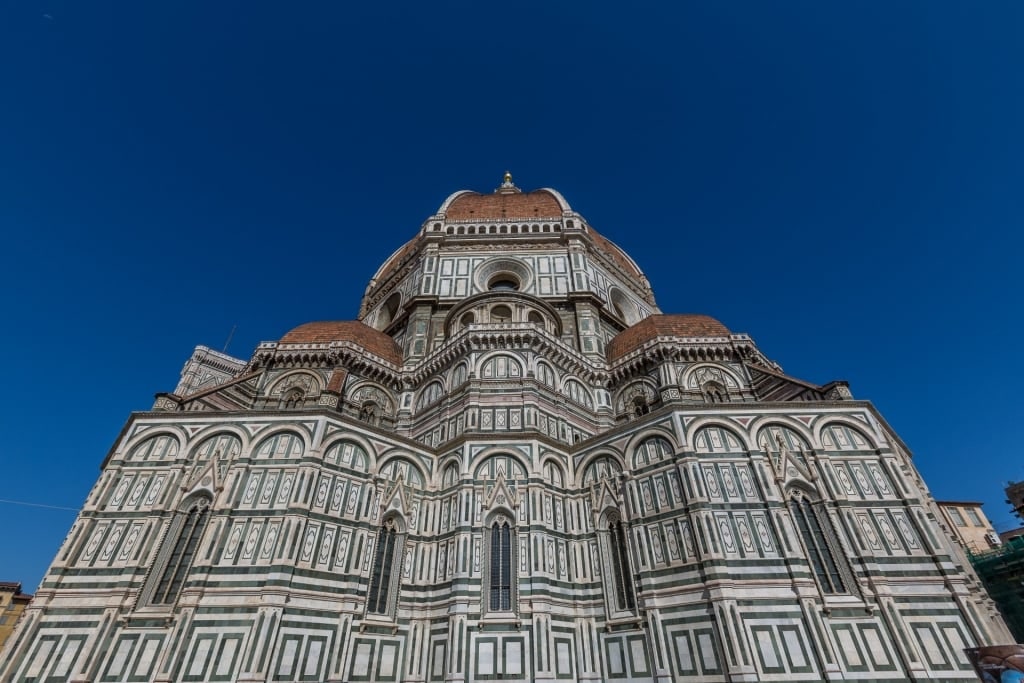
Duomo Santa Maria del Fiore
Architectural art of the most elevated kind, the Duomo Santa Maria del Fiore is the most notable landmark that Florence is known for. The cathedral is also, for many (in what is a crowded field), its most beautiful structure.
The fourth-largest cathedral in Europe, the Duomo was built over several centuries. Its original brick facade was finished in the neo-gothic style in the 19th century.
When the grime was cleaned off of its light, multi-colored marble in 2014, this historic center of the city became a markedly brighter area to be in.
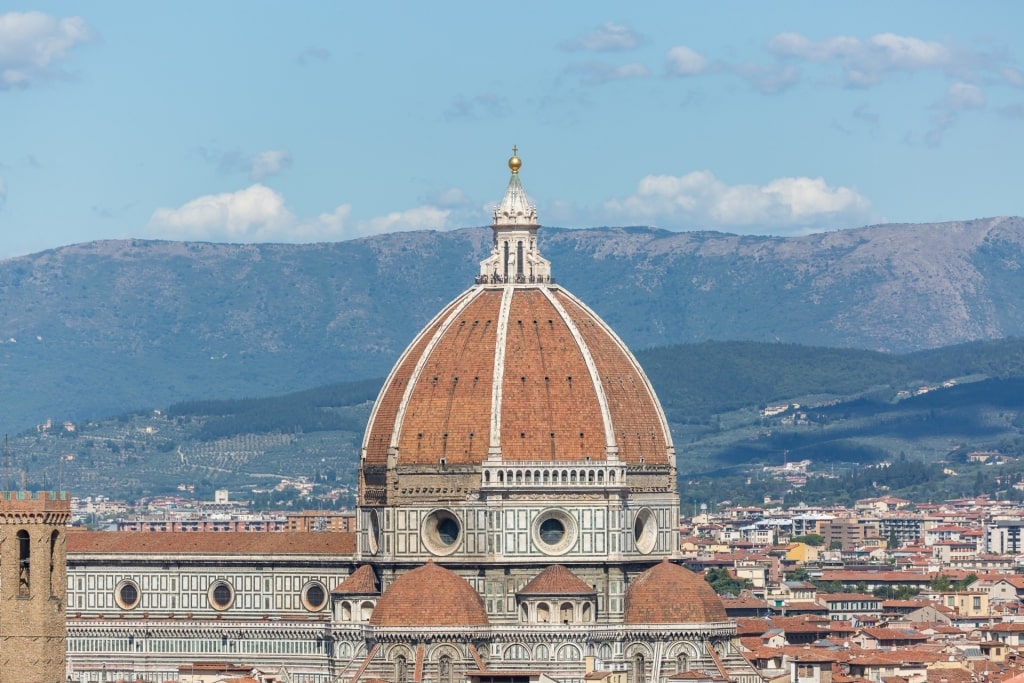
Duomo Santa Maria del Fiore
However, the red brick dome of Filippo Brunelleschi is the element of the cathedral’s construction that shines brightest. In 1418, the goldsmith-turned-architect developed a pioneering technique that allowed the creation of a dome without supporting buttresses or pointed arches.
Today, this shapely balloon of over four million bricks—a feat that required 16 years to construct—remains the largest masonry dome ever built.
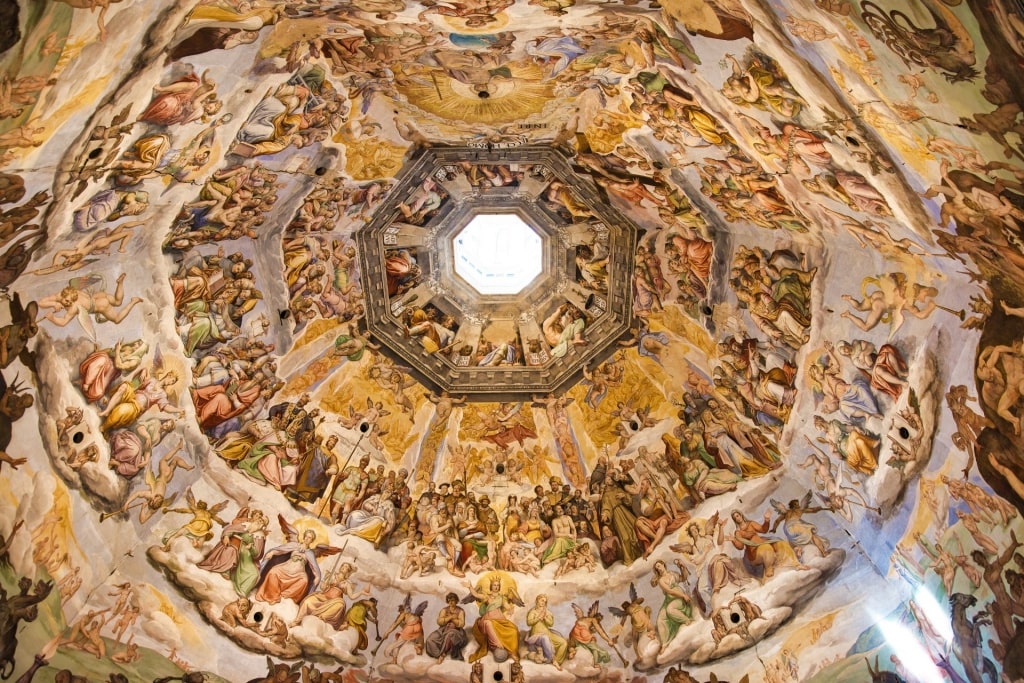
Duomo Santa Maria del Fiore
Once you’ve craned your neck and admired it from the outside, it’s time to step within and crane your neck once more to see the interior. Standing on the Duomo’s intricately inlaid marble floor, you’ll see how the dome is art inside and out.
The cupola’s interior is brilliant with frescos, designed by Giorgio Vasari and depicting the Last Judgment of Christ.
If you’d like to have an even closer look at the dome, climb the 463 stairs up to the viewing platform for views over Brunelleschi’s masterwork as well as Florence and the rolling Tuscan hills.
Church of Santa Croce
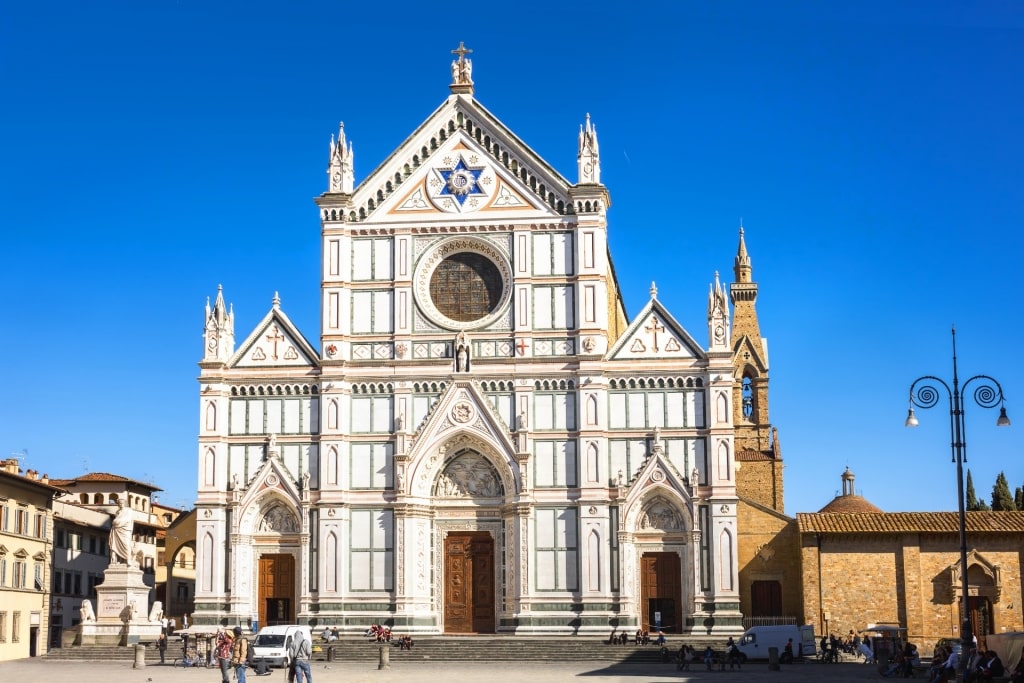
Church of Santa Croce
Also known as the “Temple of Italian Glories”, the Church of Santa Croce is a remarkable vault containing the remains of some of the Renaissance’s most significant figures.
Beneath the high ceiling of what is the world’s largest Franciscan church, you’ll find the floor marked by tomb slabs. Around 250 graves, mostly friars and members of wealthy families who donated to the church, are still intact within the hallowed walls.
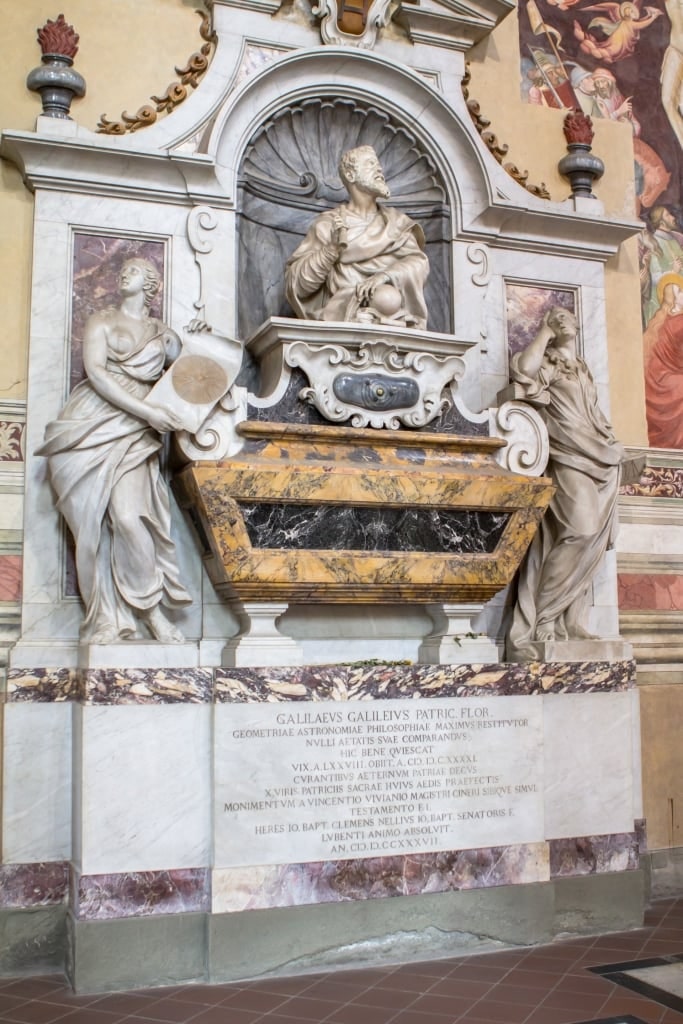
Tomb of Galileo in Church of Santa Croce
By the 15th century, monumental tombs dedicated to the great and the good of the republic began to appear in the church. Santa Croce is the final resting place of Machiavelli, Galileo, and Michelangelo (in a tomb designed by Vasari), to name a few.
Once you’ve paid your respects to these notables, it’s time to appraise Santa Croce’s 4,000 separate items of art decorating its interior. Highlights include the St. Francis frescoes by Giotto that illuminate the transept.
Meanwhile, the statue of Jesus on the cross is one of three artworks by Donatello inside, and the Pazzi Chapel was designed by Brunelleschi.
Ferragamo Museum
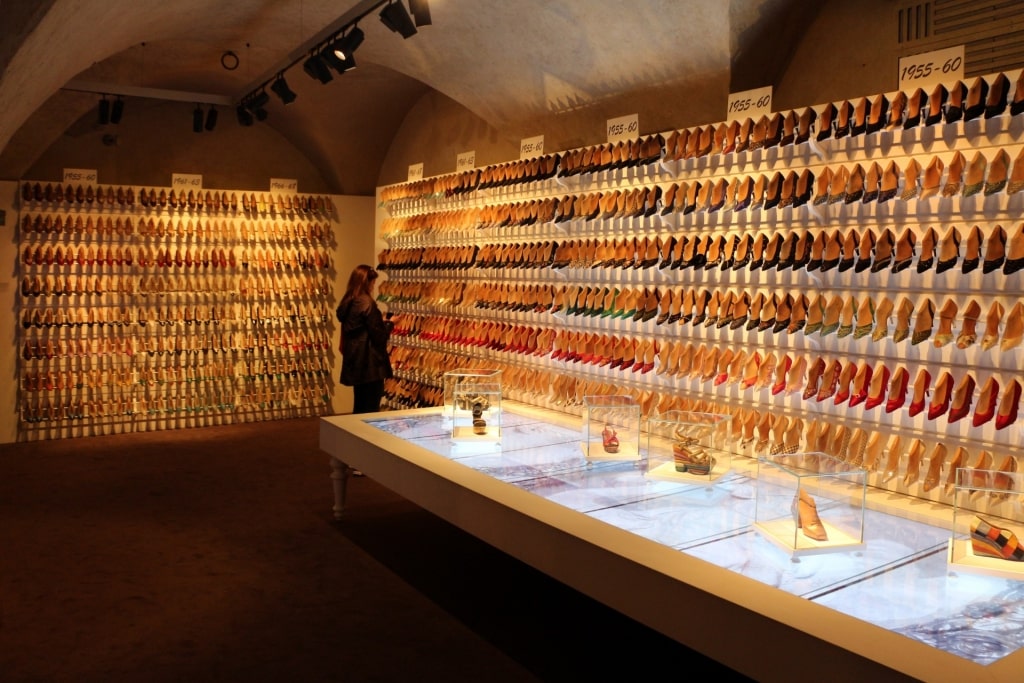
Ferragamo Museum Photo by Sailko on Wikimedia Commons, licensed under CC BY 3.0
Is fashion “art”? If there’s any country in Europe where the answer from the average Giacomo-in-the-street is a resounding “si”, it’s Italy.
Located in the shopping district of Via de Tornabuoni, the Ferragamo Museum celebrates the high fashion and wearable art of Salvatore Ferragamo and his brand.
You’ll find it in the 13th-century Palazzo Spini Feroni, today the elegant corporate headquarters of Ferragamo. This bijou museum makes for a bright and relatively frothy change of pace from the immortal artworks of the Renaissance.
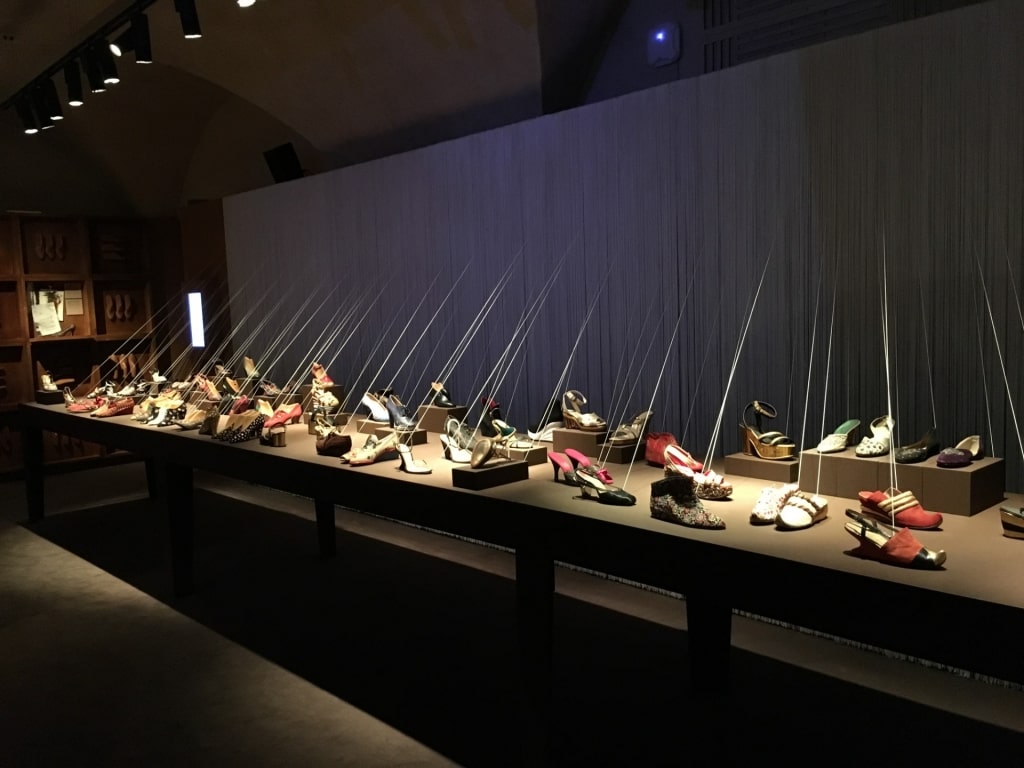
Ferragamo Museum Photo by Manuelarosi on Wikimedia Commons, licensed under CC BY-SA 4.0
Amid exhibits, sketches, and magazine pages, you’ll learn about Ferragamo’s role in developing the fashion of the foot and the artistic panache that he brought to his calling.
Perhaps the most intimate and affecting exhibit is the wooden lasts of his celebrity clients, where, for example, you can see just how flat Ingrid Bergman’s arches were.
However, the Ferragamo is not complete escapism from the Renaissance. There’s also an interesting section of the museum dedicated to the family of medieval bankers who used to call the palazzo home.
Gucci Museum
Opened in 2011 to celebrate 90 years of the fashion brand Gucci, this engaging museum is spread over three floors in the handsome and rather aptly-named 14th-century Palazzo della Mercanzia (Palace of the Merchandise).
As Florentine as a tripe sandwich, the Gucci brand began life as a leather shop run by Guccio Gucci. As you’ll discover when browsing the stylish exhibits, Gucci started out selling luggage.
As his skill and reputation grew, he branched out, eventually creating classics like his Jackie handbag, bamboo-handled bag, and horse-bit loafer.
Exhibits tell the tale of how, obsessed with horse racing, his aristocratic customers inspired Gucci to put something as prosaic as a horse’s bit on a sculpted Italian leather loafer.
Once you’ve finished silently mouthing, “I want it”, at every Oscar Awards dress on glittering display, retire for an award-worthy lunch at Gucci Osteria da Massimo Bottura downstairs.
Piazza della Signoria
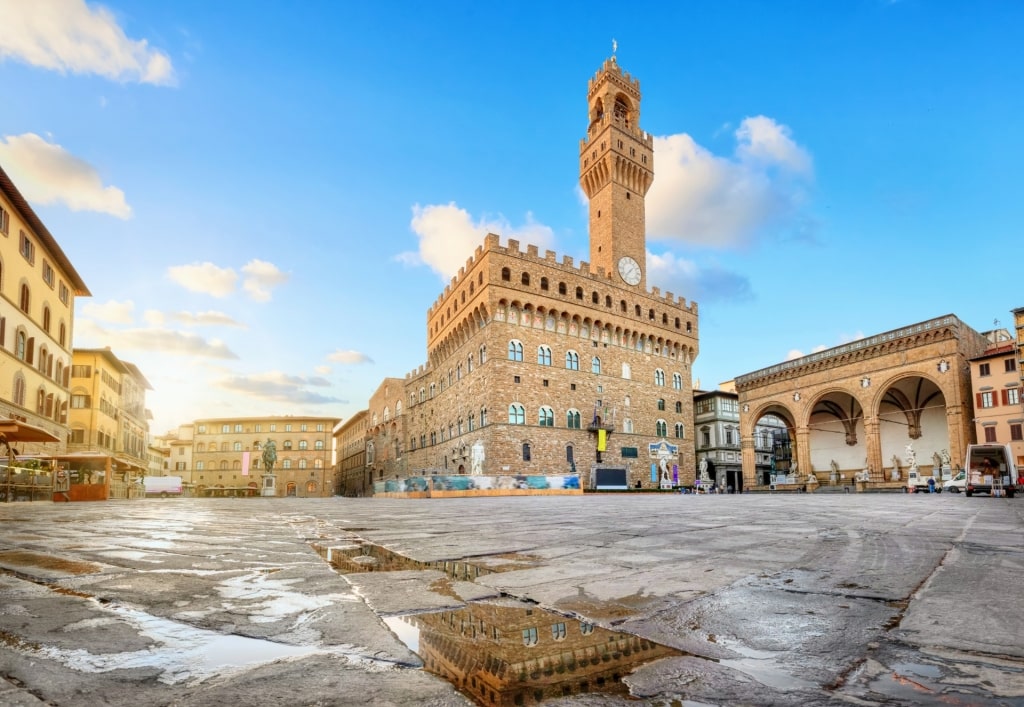
Piazza della Signoria
Since the 14th century, Piazza della Signoria has been the axle around which the political and artistic life of the city has spun.
Art in Florence, especially in the Renaissance and during the time of the Medicis, had long been a political as well as a cultural phenomenon. The dukes of medieval Italy understood the importance of amassing cultural capital alongside military and monetary might.
In Piazza della Signoria, that philosophy of domination is on imperious, elegant display.
The square is the address of the Palazzo Vecchio, the city’s fortified town hall. It overlooks an outdoor sculpture park of masterpieces chosen for the message they would send to the Medici’s enemies and the Florentine populace.
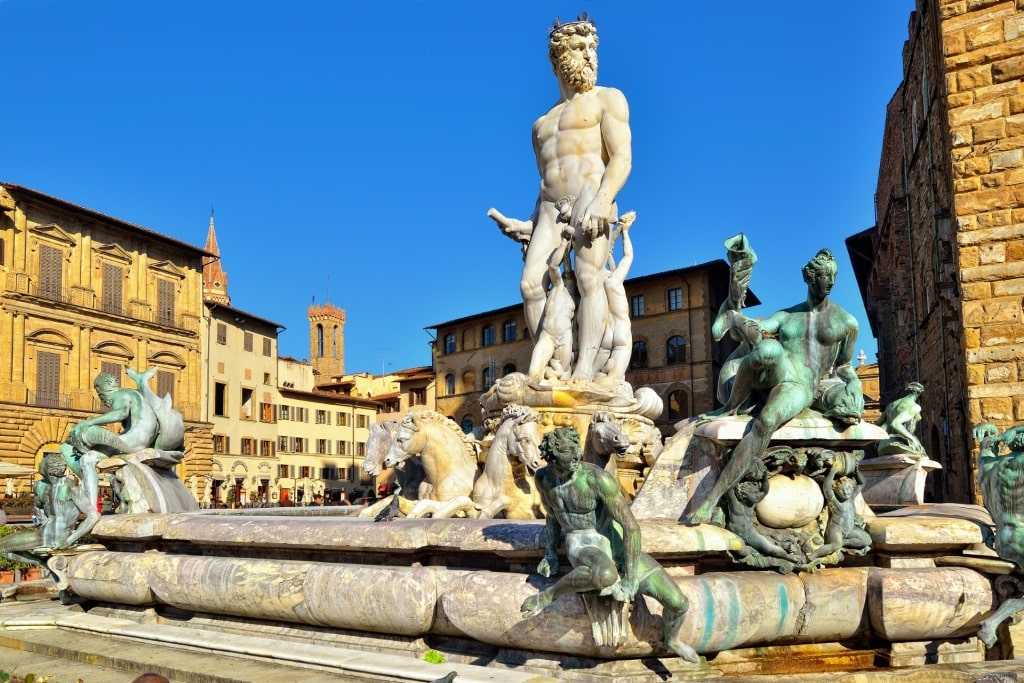
Ammannati’s Nettuno fountain, Piazza della Signoria
Here you have Ammannati’s Nettuno fountain, with the insouciant sea god rising from the center, indicative of the Medicis’ sea power.
Other examples of high art political posturing include the David (now a copy with the original protected from the elements in the Accademia) and the somewhat less subtle Perseus, with gory head in hand, by Cellini.
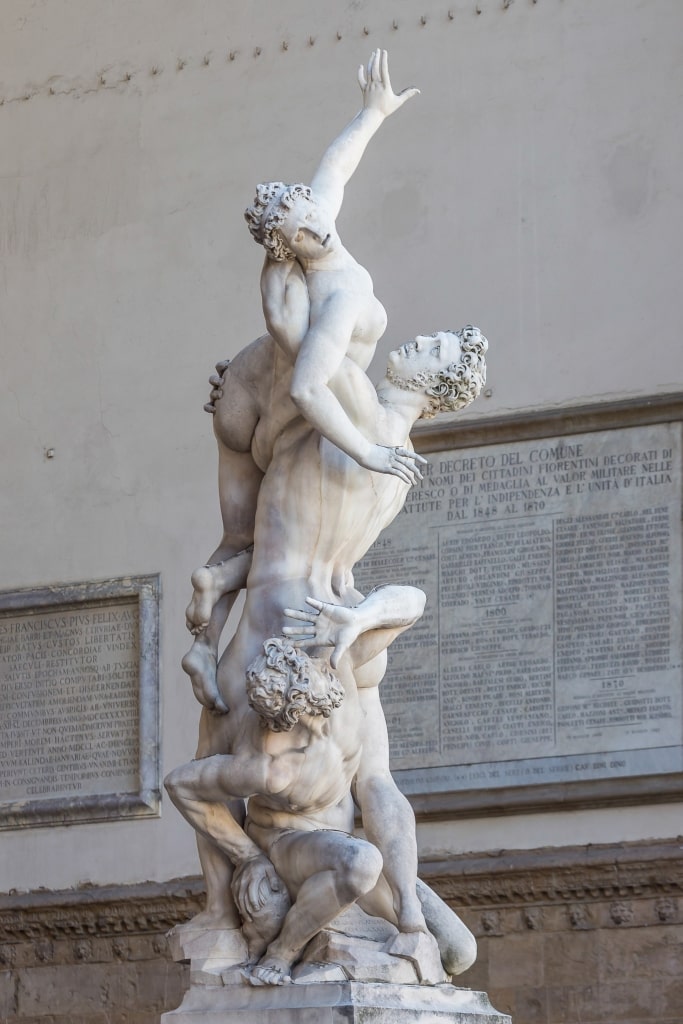
Abduction of a Sabine Woman, Piazza della Signoria
This latter piece is found to the right of the Palazzo Vecchio in the Loggia dei Lanzi. Here, beneath this covered space’s elegant high arches, you’ll find another exquisite piece of violent sculpture.
Lighting up the loggia with its technical brilliance is the original Abduction of a Sabine Woman by Giambologna.
Read: Most Beautiful Medieval Cities in Europe
Boboli Gardens
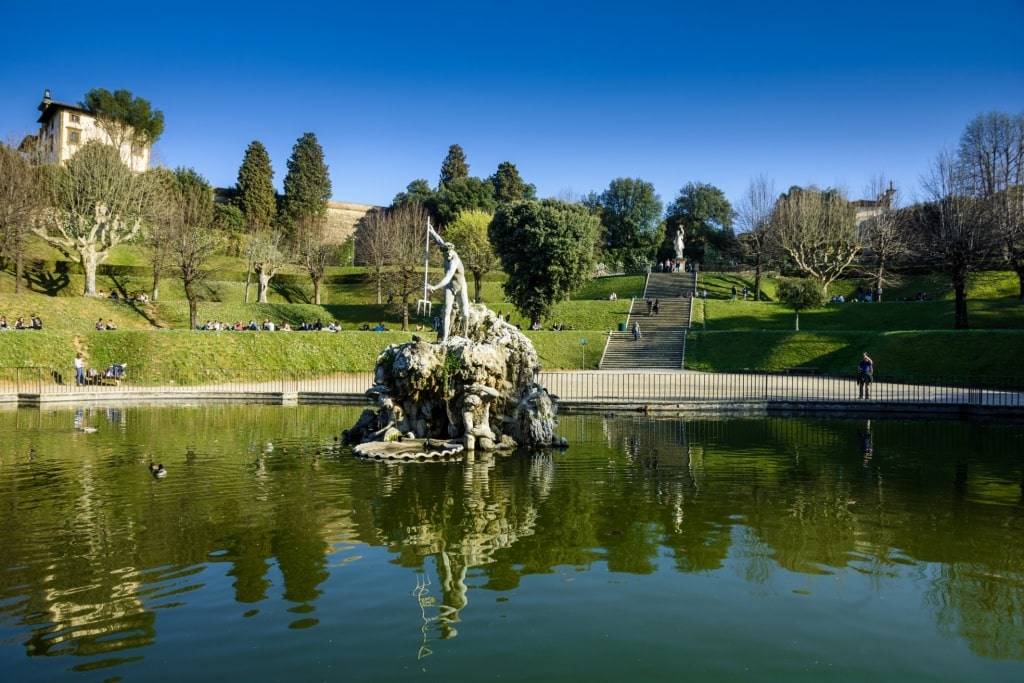
Fountain of Neptune, Boboli Gardens
In the Boboli Gardens, behind the grand Pitti Palace, you’ll find some unusual examples of art in Florence designed to work in harmony with their surroundings.
The Boboli Gardens, which extends to more than 100 acres, is rightly seen as one of Italy’s most significant heritage gardens.
It was a pioneering design at the time when it was commissioned towards the end of the 16th century by Cosimo Medici I, the Grand Duke of Tuscany. He ensured its immortality by bringing in some of the greatest talents of the Renaissance to assist in its creation.
Amid the buzzing of bees around romantic roses and the splash of the ornate fountains, you’ll come across Roman antiquities that Italy is known for, set amid the Renaissance-era follies and focal points.
The design of the Italian gardens was ultimately a collaboration between the artist-architects Ammanati, Vasari, and Buontalenti.
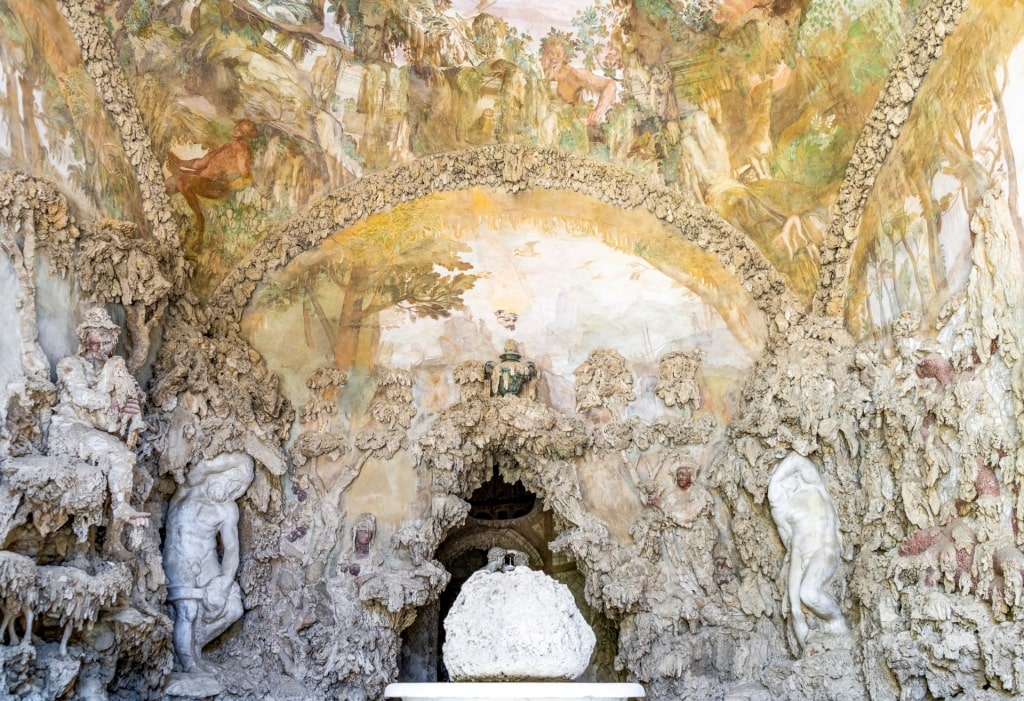
Buontalenti Grotto, Boboli Gardens
Must-see elements of the gardens include the Fountain of Neptune by Lorenzi, positioned grandly at the lip of an amphitheater at the top of a double ramp, and the Buontalenti Grotto. This latter edifice is split into three stunning parts, with Giambologna’s Bathing Venus the pearl contained within.
Baptistery of Saint John
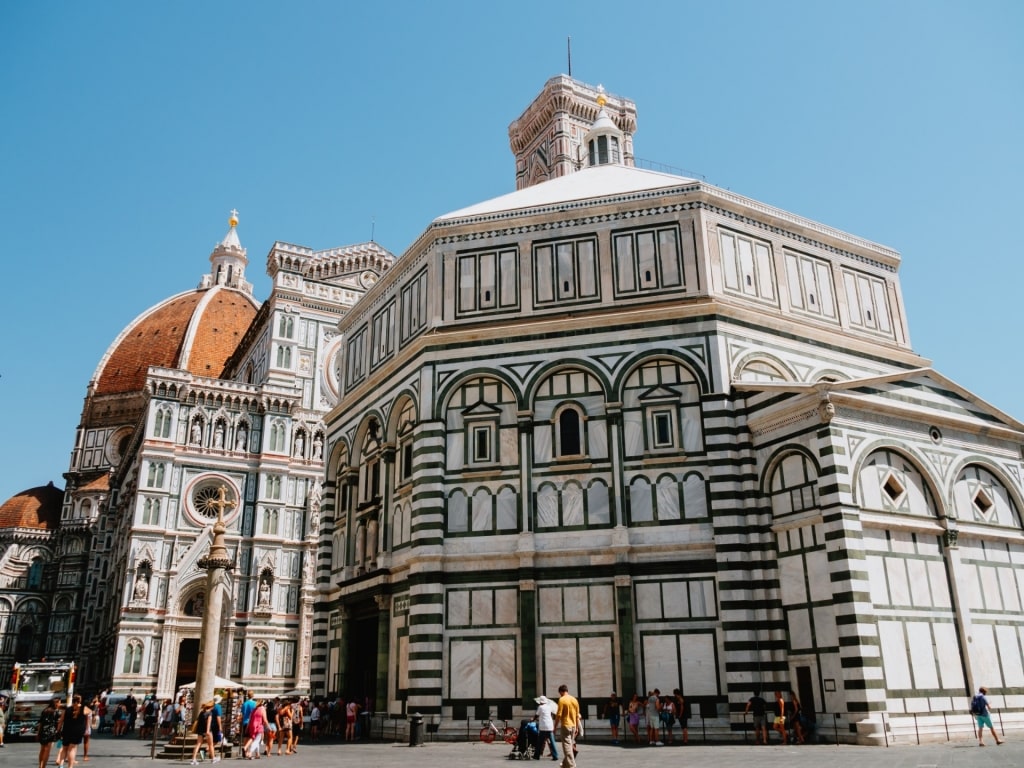
Baptistery of Saint John
Set opposite the Duomo, the Baptistery of Saint John looks like an ornate panettone box. Its real treasures, however, are not found within but on its exterior.
It’s here you’ll find Lorenzo Ghiberti’s masterpiece, and one of the highest achievements of the Renaissance: The Gates of Paradise.
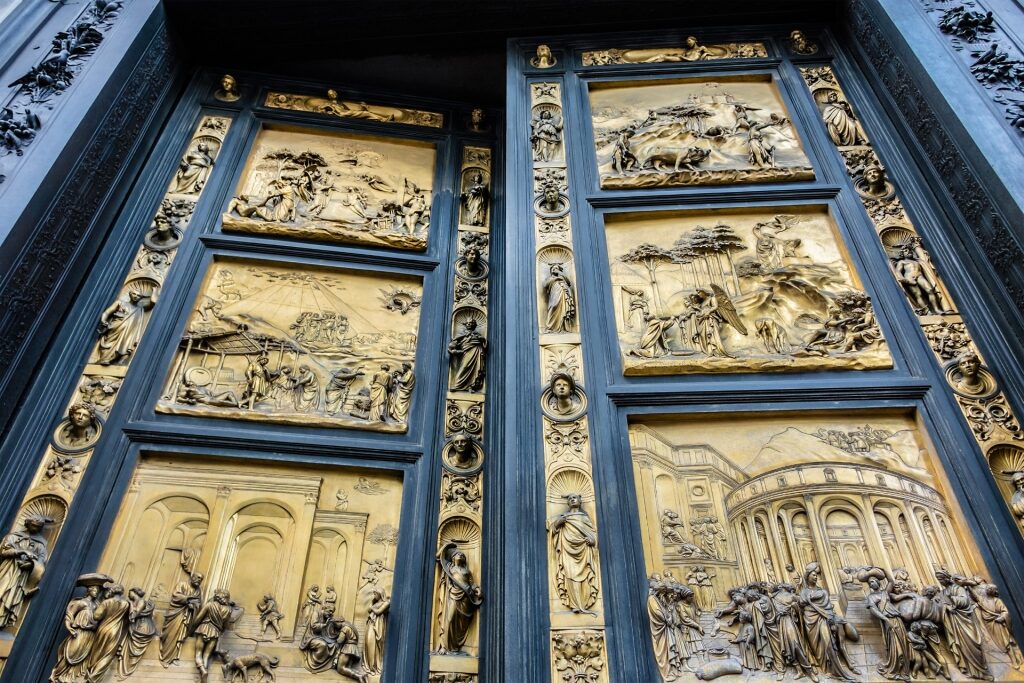
The Gates of Paradise, Baptistery of Saint John
Or you used to. The Gates of Paradise shining on the baptistry’s marble exterior are copies, the bronze originals hidden away for protection in the Museo dell’Opera del Duomo di Santa Maria del Fiore.
The originals haven’t always looked as good as they do today, the result of painstaking restoration. In 1966, the river Arno flooded and five panels were swept off.
Once you’ve inspected the six doors with The Old Testament retold in ten detailed, gilded panels, step onto the marble mosaic floor of what is the oldest building in Florence.
Dating back to the fourth or fifth century AD, the baptistery enjoyed a major marble makeover during the Renaissance, adding another work of art to the city’s streets.
Read: Best Things to Do in Florence at Night
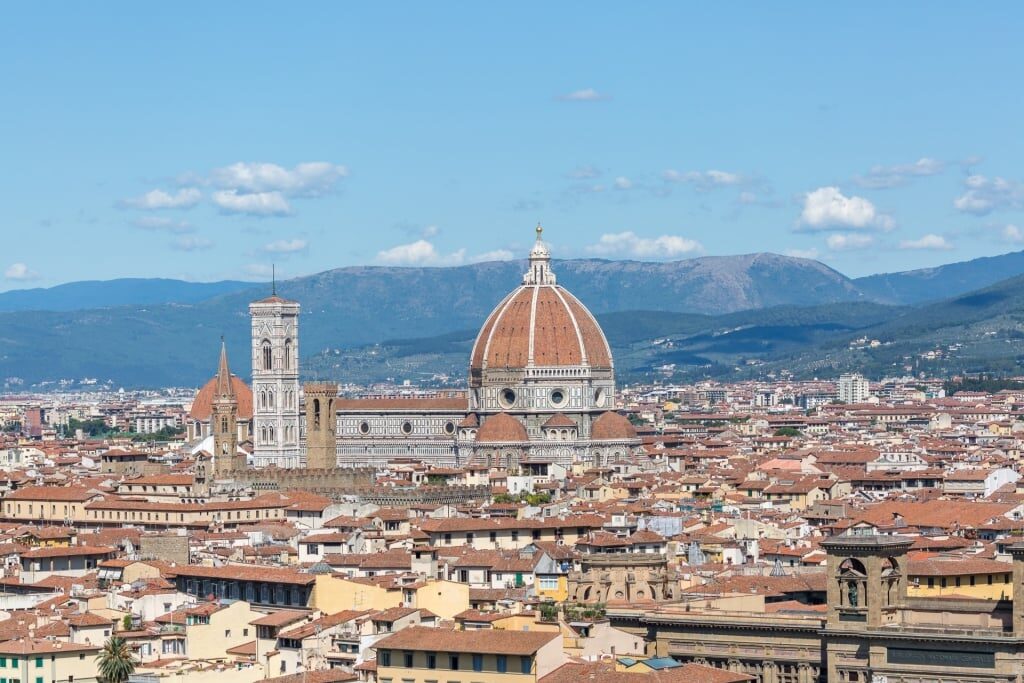
Florence
Experience all of the famous art in Florence and more on a cruise vacation. From world-renowned architecture and artworks to ancient culture and delicious cuisine, Italy is deservedly one of the world’s most popular destinations.
Browse our cruises to Florence online and book an incredible Italian vacation today.
